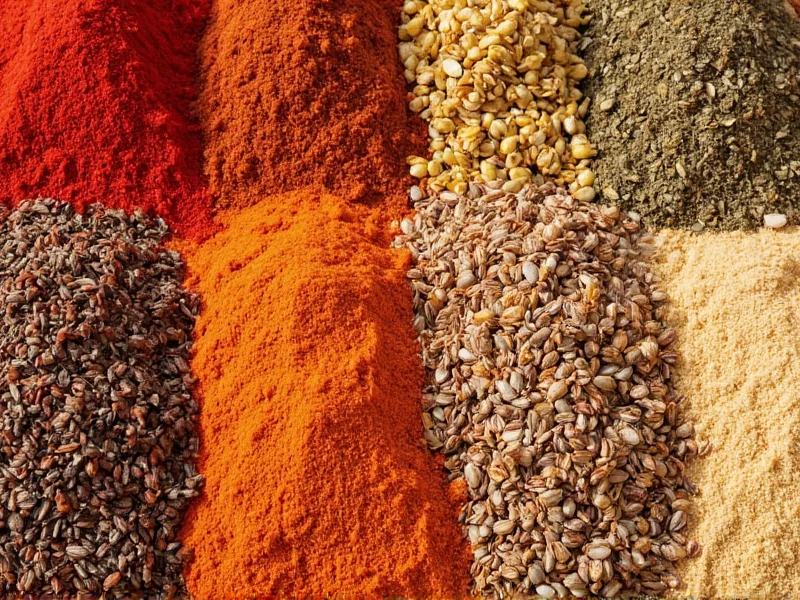Understanding spice longevity helps maintain culinary quality without unnecessary waste. Unlike perishable foods, dried spices rarely pose safety risks when 'expired'—they simply become less flavorful. This comprehensive guide explains exactly how long different spices remain effective, how to assess their freshness, and professional storage techniques to maximize their shelf life.
Understanding Spice Shelf Life Fundamentals
When discussing how long do spices last before expiring, it's crucial to recognize that spices undergo flavor degradation rather than true expiration. The FDA doesn't require expiration dates on spice packaging because dried herbs and spices don't spoil in the conventional sense. Moisture is the primary enemy—when introduced, it can cause mold growth, but properly stored dry spices remain safe indefinitely.
Professional chefs and food scientists agree that the real issue with aged spices is reduced flavor compounds. Over time, essential oils evaporate and volatile compounds break down, resulting in bland seasonings that fail to enhance dishes. This flavor loss occurs gradually, making it difficult to pinpoint exact expiration—hence the importance of learning how to test if spices are still fresh.
Spice Longevity by Type
The shelf life varies significantly between ground and whole spices due to surface area exposure. Whole spices retain essential oils longer, explaining their extended usability. Below is a detailed reference for common kitchen staples:
| Spice Type | Optimal Shelf Life | Signs of Degradation | Maximum Usable Time |
|---|---|---|---|
| Ground spices (cinnamon, cumin, paprika) | 2-3 years | Faded color, weak aroma, flat taste | 4 years (reduced potency) |
| Whole spices (peppercorns, cloves, nutmeg) | 3-4 years | Diminished fragrance, loss of oiliness | 5+ years (when properly stored) |
| Leafy herbs (basil, oregano, thyme) | 1-2 years | Crumbly texture, brownish color, hay-like smell | 3 years |
| Spice blends (curry powder, chili powder) | 1-2 years | Separation of ingredients, stale odor | 2.5 years |
| Saffron | 2-3 years | Faded red threads, weak aroma | 4 years (in ideal conditions) |
Practical Freshness Assessment Techniques
Learning signs that spices have gone bad requires engaging multiple senses. Professional chefs use these reliable methods:
The Visual Inspection
Brightly colored spices like paprika and turmeric noticeably fade as they age. Compare against a fresh sample if available—older spices often appear dull or develop color variations. Check for moisture-induced clumping or visible mold, which indicates contamination requiring immediate disposal.
The Aroma Test
This is the most reliable freshness indicator. Place a small amount in your palm, rub gently to release oils, then inhale deeply. Fresh spices produce an immediate, potent fragrance. If you must bury your nose in the spice to detect any scent, it's significantly degraded. As culinary expert Chef Maria Rodriguez notes, "Good cinnamon should make you sneeze—that's how potent it is."
The Taste Evaluation
For do expired spices lose flavor or become unsafe concerns, a cautious taste test provides clarity. Mix a pinch with warm water—fresh spices create immediate flavor sensation, while degraded ones taste flat or dusty. Never taste spices showing mold or moisture. Remember that reduced potency doesn't indicate safety issues, just diminished culinary value.
Professional-Grade Storage Methods
Implementing the best way to store spices for maximum shelf life dramatically extends usability. Consider these evidence-based approaches:
- Airtight containers: Glass jars with tight-sealing lids prevent moisture absorption better than plastic. Amber or cobalt glass protects against light degradation.
- Cool, dark location: Store spices away from stoves, dishwashers, and windows. Pantry temperatures below 70°F (21°C) optimize longevity.
- Buy in small quantities: Purchase whole spices and grind as needed. Specialty stores often sell smaller portions than supermarkets.
- Avoid refrigerator storage: Temperature fluctuations cause condensation. The exception is homemade spice blends containing garlic or onion powder.
For those wondering about proper spice storage containers to prevent moisture, consider containers with rubber gaskets and oxygen absorbers. Vacuum-sealed systems work well for bulk purchases but require portioning into smaller daily-use containers to minimize air exposure.
Maximizing Older Spices
When spices pass their prime but remain safe, employ these chef-recommended techniques:
- Toast gently: Briefly heating whole spices in a dry pan releases remaining oils
- Double the amount: Compensate for reduced potency in recipes (but avoid over-salting)
- Create infused oils: Steep older spices in oil to extract remaining flavors
- Make spice sachets: Use faded spices in potpourri or drawer fresheners
Knowing when to replace old spices in your pantry prevents culinary disappointment. If spices fail the aroma test or show visible degradation, replacement is warranted. Maintain a simple inventory system—label containers with purchase dates using masking tape. Rotate stock using the 'first in, first out' method to minimize waste.
Special Considerations for Spice Blends
Commercial blends like curry powder or taco seasoning have shorter shelf lives due to varied ingredient stability. The weakest component (often paprika or cumin) determines overall longevity. Homemade blends without anti-caking agents typically last 6-12 months. For extended freshness, store blend components separately and mix small batches as needed.











 浙公网安备
33010002000092号
浙公网安备
33010002000092号 浙B2-20120091-4
浙B2-20120091-4